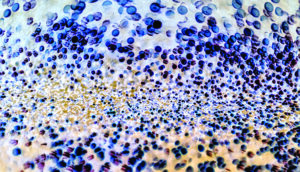Health & Welfare
One pathogen strain seems the main culprit in damaging salmonid disease
A distinct strain of the main fungus-like pathogen which causes saprolegniosis — thought to be responsible for around 10% of economic losses in the salmonid industry — looks likely to be responsible for the majority of outbreaks of the disease on Atlantic salmon fish farms.
Understanding how diseases arise and spread can guide global aquaculture’s responses
An interview with Edmund Peeler, PhD, principal epidemiologist at the Centre for Environment, Fisheries and Aquaculture Science (Cefas).
Understanding plankton threats to salmon requires a mix of old and new technologies
Using both “traditional” microscopy and environmental DNA (eDNA) analysis can help paint a complete picture of plankton threats to salmon aquaculture, according to University of Glasgow research.
Bacteriophages’ potential for aquaculture still waits to be tapped
Bacteriophages — viruses which infect and kill bacteria — have been seen as a promising option for use in aquaculture for a number of years.
How to bring greater welfare knowledge to the world’s tilapia farmers
An interview with Sara Barrento, e-learning and aquaculture program manager for FAI Farms
Using proteomics to understand infectious disease response in aquaculture
By Robert Stewart, PhD candidate at the Roslin Institute
Stomach-resistant oral vaccines could offer fish farmers easier vaccine administration
Oral vaccines hold a great deal of promise for fish farmers. Easier and quicker to administer than injected vaccines, they are also potentially suitable for fish that are too small for injection vaccination, including larval stages.









